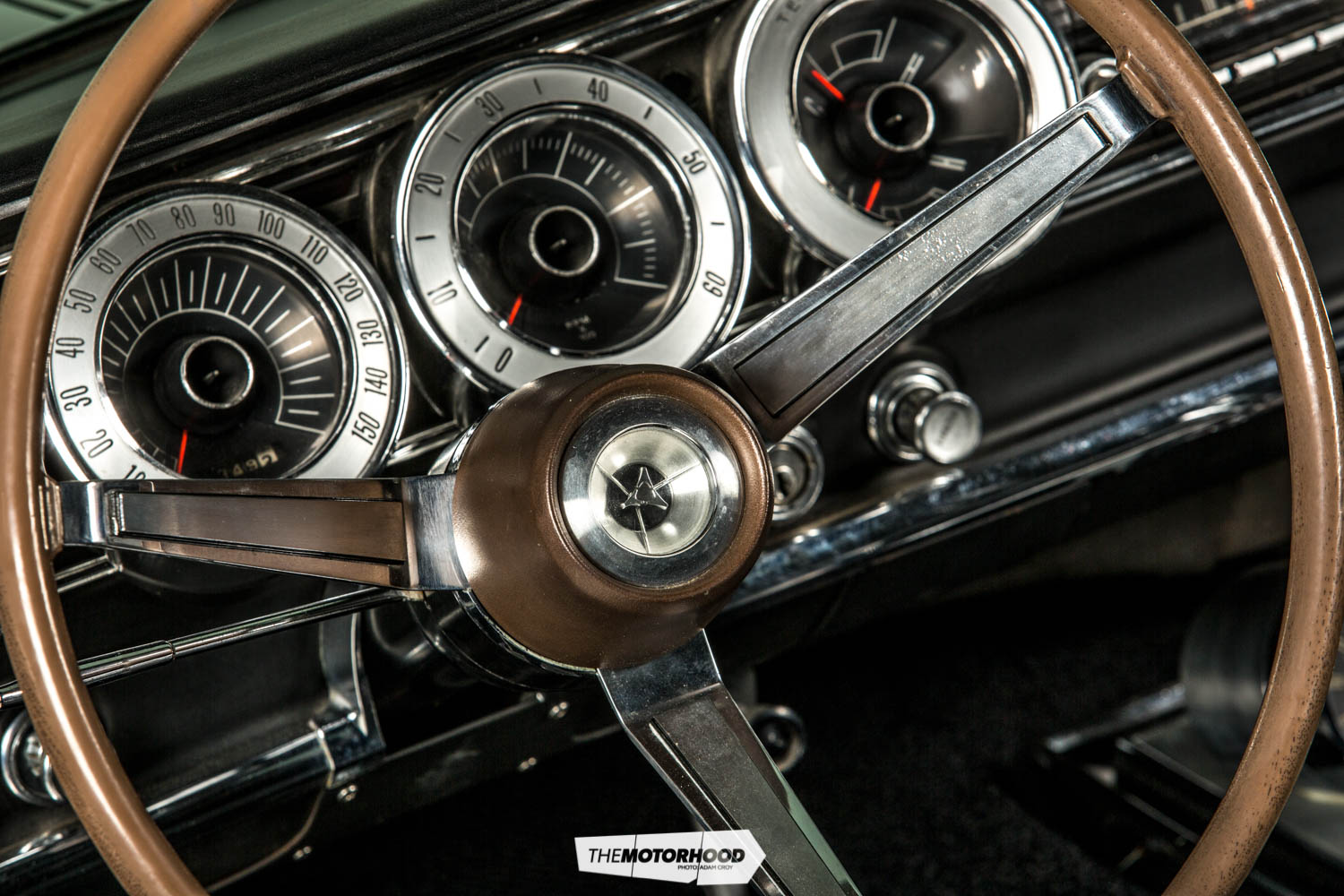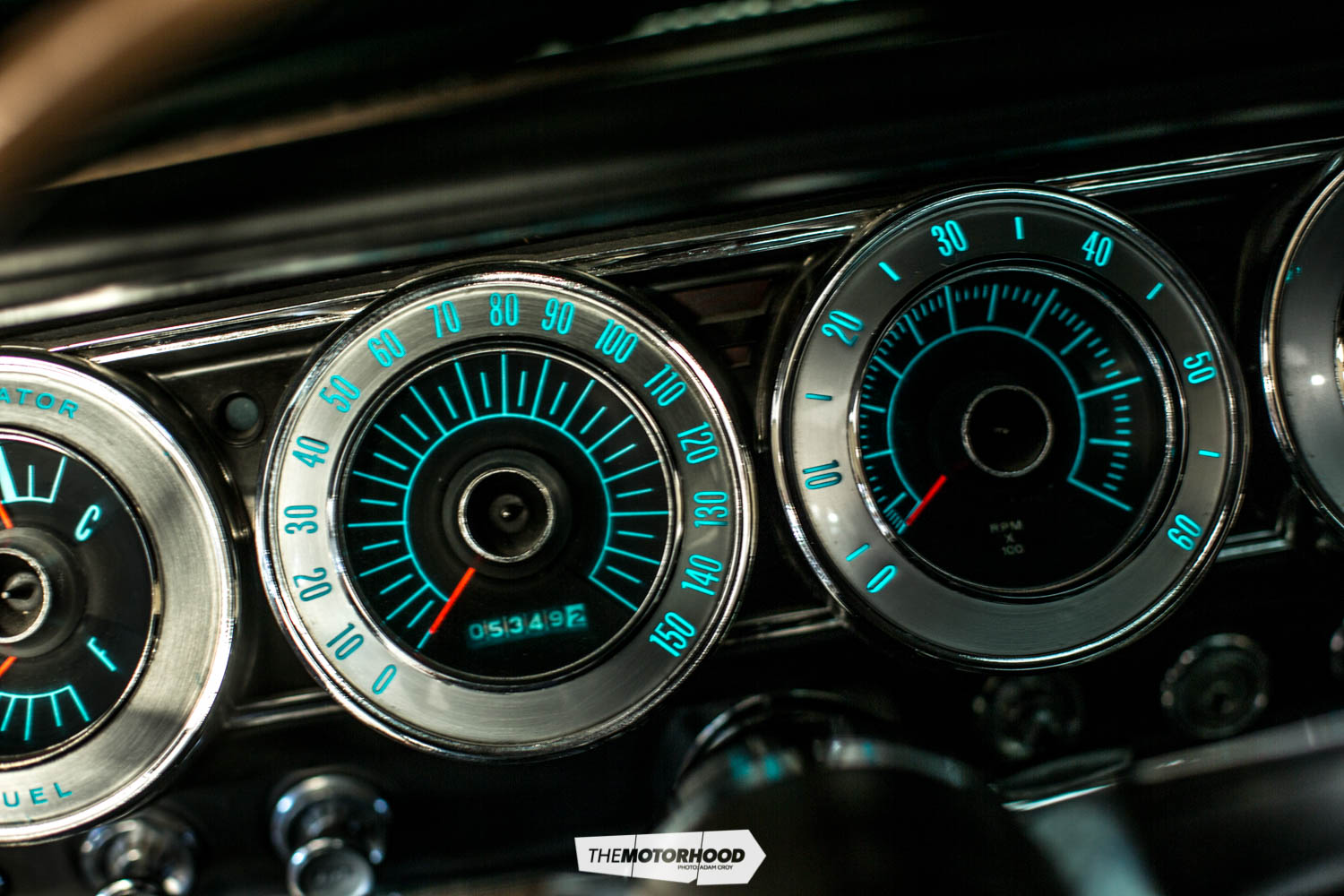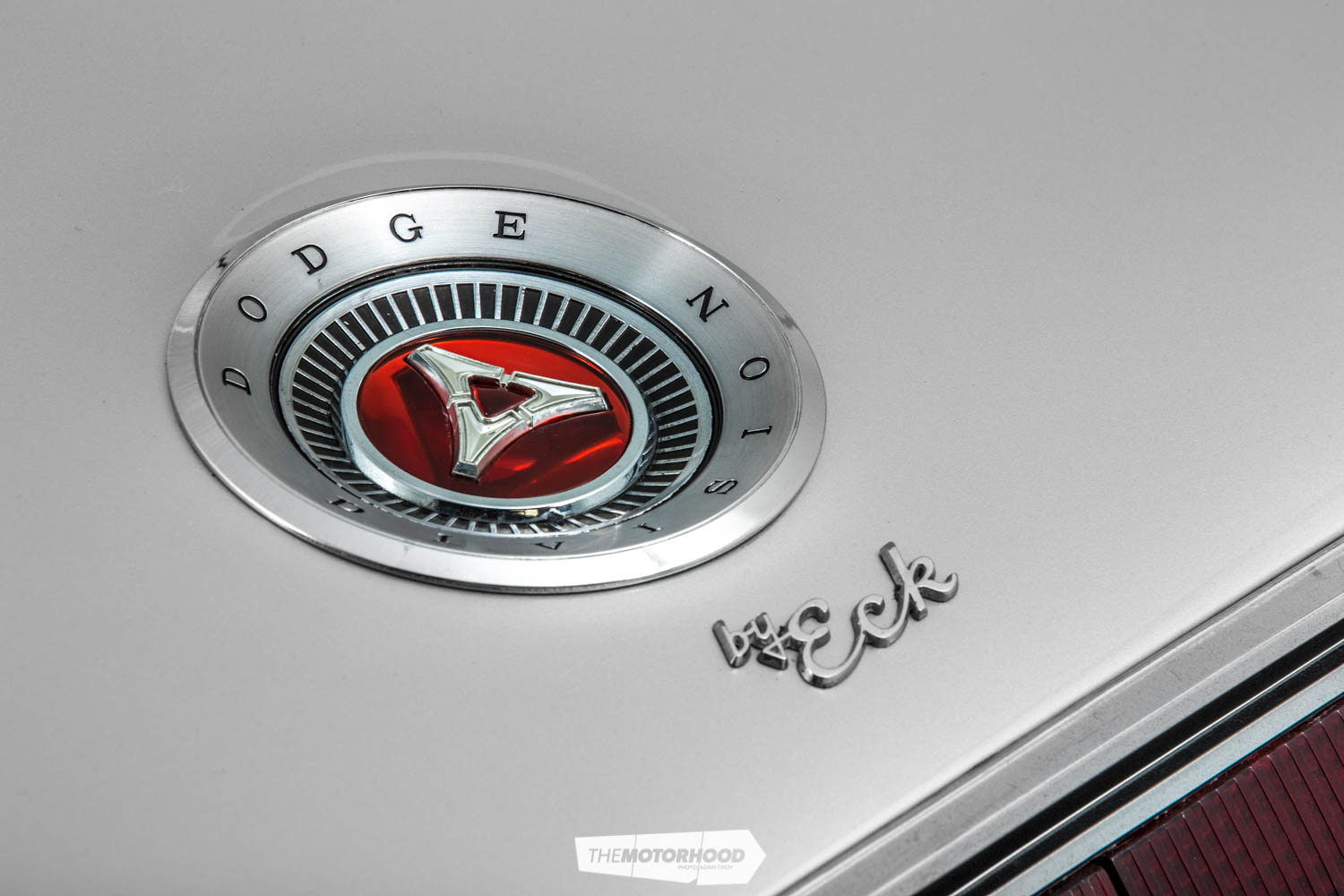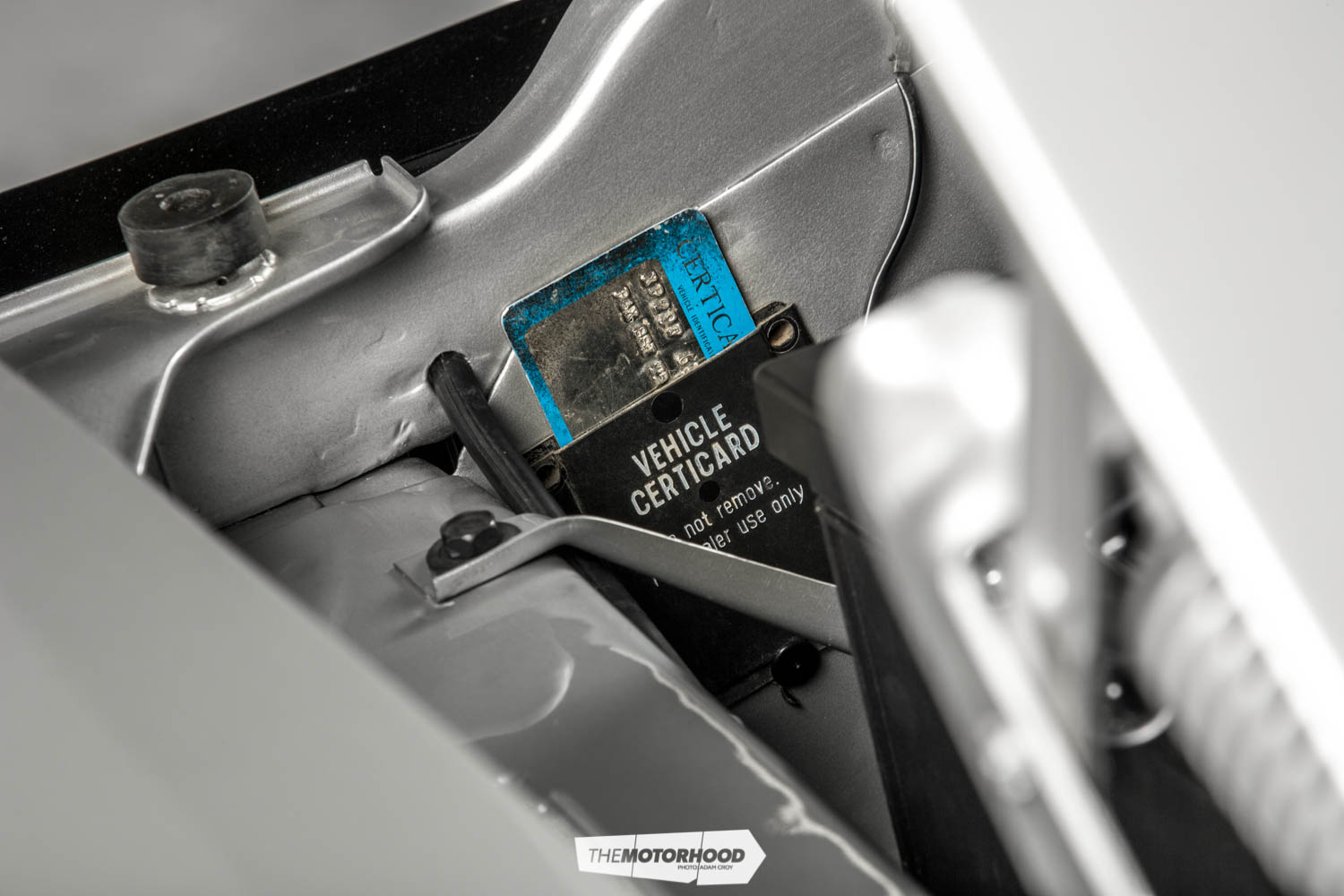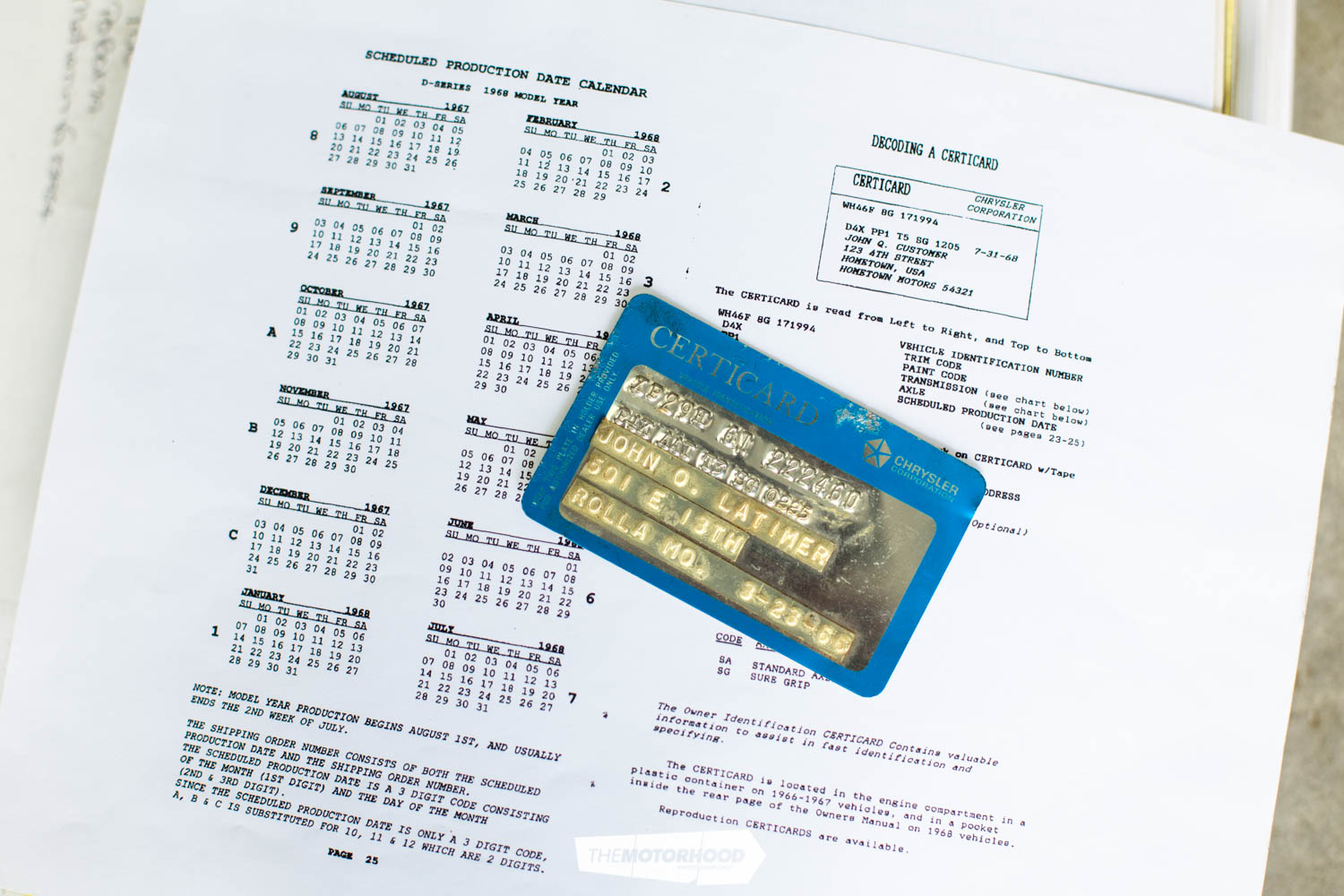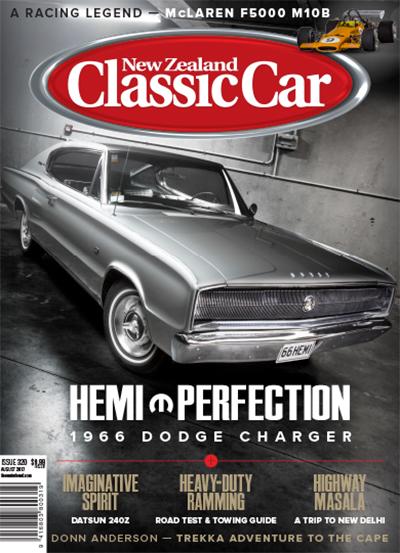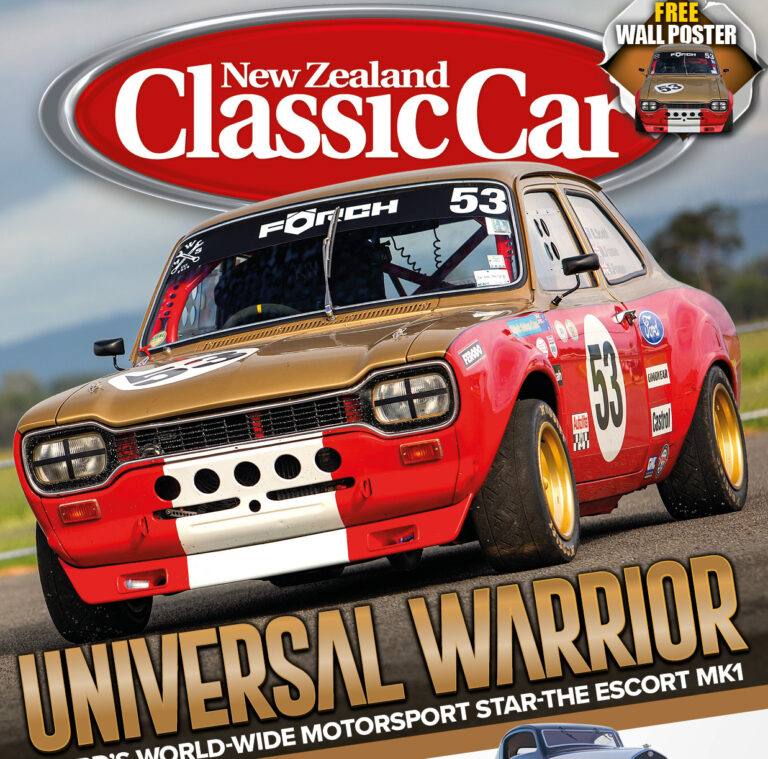With an immense knowledge of all things Mopar it may come as a surprise that this numbers-matching, Hemi-powered ’66 Charger represents Rodney and Zeta Holland’s first full build of their own, there is no better way it could have come together

In 1964, Chrysler created a legend. Its highly efficient hemispherical-headed V8 design of the ’50s was revised, and the resulting monster became the foundation of an automotive legend that persists over a half-century later. If you were to attend a current National Hot Rod Association (NHRA) drag meeting, you’d note that the ground-shaking and eardrum-bursting nitro-fuelled weapons that make up the ranks are powered by modernized derivatives of that legendary lump of ’60s iron — the 426 Hemi.
An all-out race engine designed primarily for Nascar and used in the Plymouth Belvederes of the year, the Hemi’s unrivalled performance put its racing eligibility into question — so a milder ‘Street Hemi’ began development in 1965, for inclusion in certain Chrysler models to ensure that the numbers of Hemi-engined vehicles sold to the general public would meet homologation requirements. This Street Hemi design was fundamentally the same as the race engine, with several concessions towards improved street drivability. Most notable of these were the reduced compression ratio, down from 12.5:1 to 10.25:1, and a milder camshaft profile, while external changes included cast-iron headers in place of tubular-steel headers and a dual-plane aluminium intake manifold topped with two Carter AFB four-barrel carbs. While it might be called a ‘street’ engine, the 426 Street Hemi is anything but …

As luck would have it, at the time that Chrysler’s rocket scientists were busy redeveloping the Hemi engine, the corporate bigwigs had also chosen the Dodge Division to spearhead an all-new market segment. It was intended to be a midsize model to slot between the lower-end ‘pony-car’ segment and the more upmarket, luxury-oriented sector of the market, and Dodge started with the most suitable base — the Chrysler B-platform used beneath the then-current Coronet.
As the new model would straddle two very different markets, Dodge’s designers did something both logical and unexpected. They effectively chopped the roof off the existing Coronet and replaced it with a sportier fastback design. In fact, the 1966 Dodge Coronet shares its front-end panels with what would become the 1966 Dodge Charger. With its polarizing exterior design and rather high base price, the 1966 Dodge Charger certainly didn’t enjoy the same number of sales as the pony-car market.
Of the 37,344 Chargers produced in 1966, only 468 were optioned with the 426 Street Hemi. However, of these 468, even fewer were built to the holy-grail specification of late-’60s Mopars — 426 Hemi and A-833 four-speed manual transmission. Only 250 of these were built, and you’re looking at one
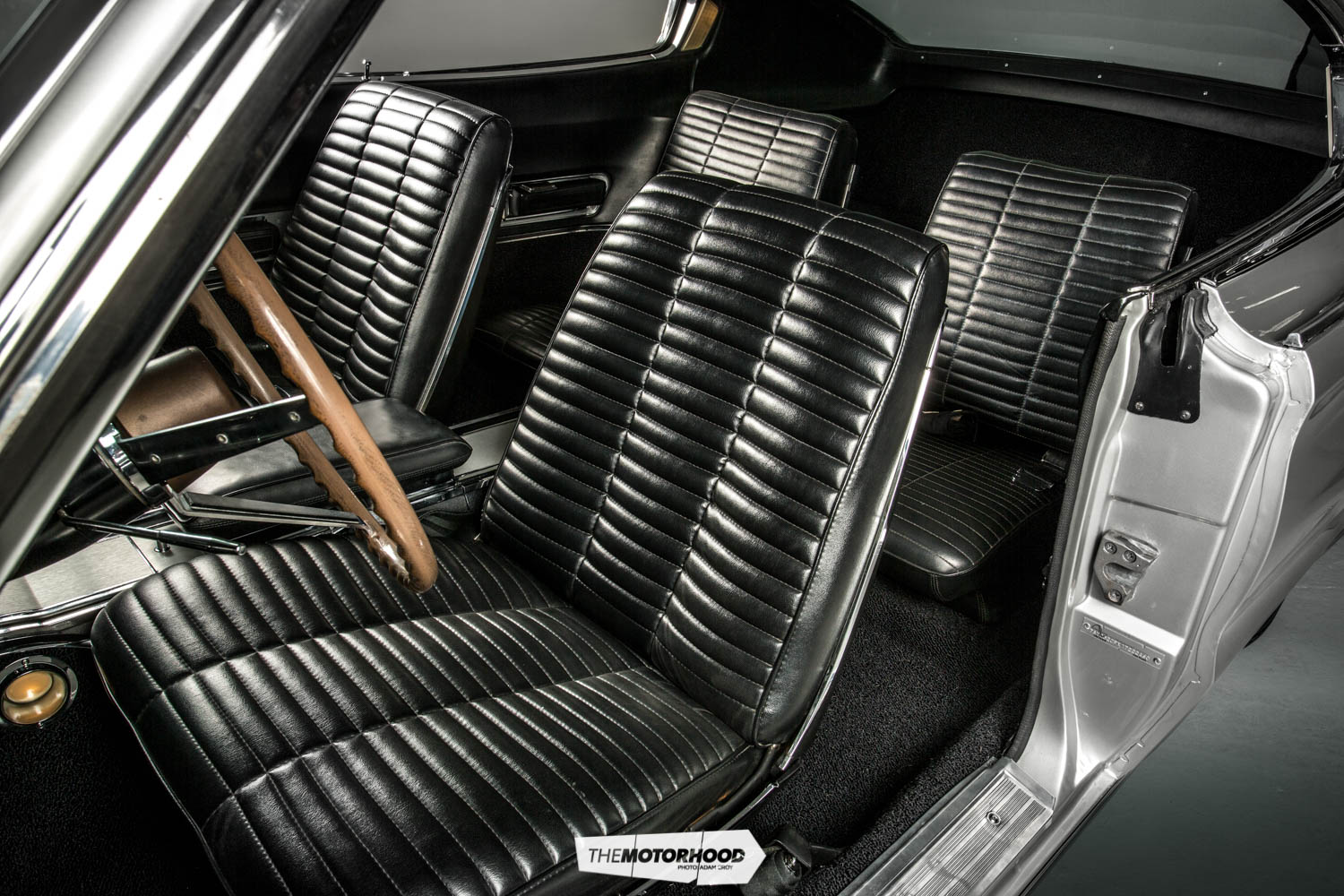
Too good to be true
“We bought the Charger four years ago, in June or July of 2013,” Rodney Holland recalls. But where the car’s story really starts is with Owen Grigg, whose ’57 Chrysler 300C Rodney painstakingly restored and which we featured in the April 2012 issue of New Zealand Classic Car. Owen had also sold Rodney and his partner, Zeta, a genuine Hurst Oldsmobile — one the couple ended up driving for quite some time.
Rodney and Zeta enjoyed the Hurst Olds, not least because it was complete and ready to go with no work required — something Rodney couldn’t overlook, as he was working around the clock at his Rodney’s Restorations business. But another opportunity presented itself when Owen cruised around one day, as he tends to do, and told Rodney and Zeta about a mate of his in Texas in the US who knew of a “cheap Hemi Charger”. This was promptly shot down with a, “Nah, there’s no such thing!” from Rodney and Zeta both, but, in this case, the Mopar nuts were to be proven wrong. A bit of online digging revealed a listing on Craigslist for precisely that — a supposedly numbers-matching ’66 Charger, with all the fruit, all documentation, and an asking price that beggared belief. “I asked Rodney what he loved more — the Olds or the Charger,” Zeta says. “You want to own both, but you can’t. We could only have one, and, for Rodney, it had to be the Charger.”
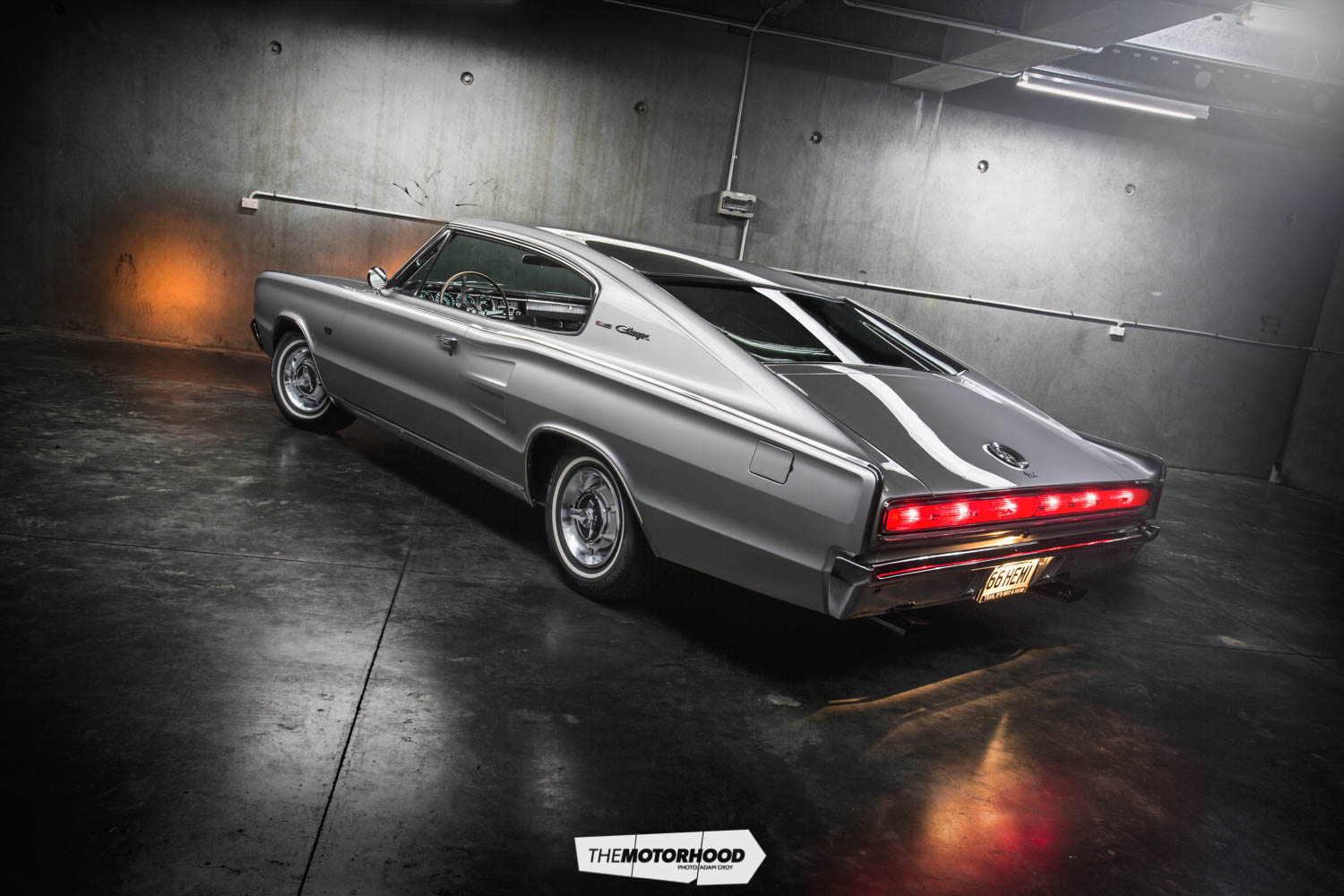
The Charger was listed for sale by ‘Hemi Don’ McIlwain in Yuba City, North California, and, as luck would have it, they were in a position to buy it, thanks especially to the help of Marcus Goldsworthy at Famous Pacific Shipping (FPS). This was helped by the fact that Rodney was already booked in to head abroad to Road America, and he planned to check the car out before the race to ensure that it was all it was supposed to be. That ended up being deferred until after they’d finished at the track, and Rodney couldn’t have hustled the boys over to Hemi Don’s any quicker.
He smiles when remembering some of the Kiwis’ reactions to the “primered-up piece of junk”, but, as soon as he set eyes on it, Rodney knew it was the real deal. A thorough once-over of the car only convinced him further, and something in Don’s character told Rodney that he was dealing with a completely trustworthy person. The deal was as good as done, and, after he’d returned home to New Zealand, Rodney and Zeta could scarcely wait for the Charger to arrive.
Just a little patience
With everything required to complete it, and a substantial quantity of documentation dating right back to the original 1966 purchase order, there was little question that Rodney and Zeta had their hands on a very rare car indeed. However, progress was slow, and anyone who knows Rodney will know why. His work ethic is so finely tuned towards providing the best possible service for his customers that he rarely has time to focus on his own projects. He did chip away at it as time permitted, although the overall quality of the metal work was exceptional for a car of its age — Rodney only needed Johno Panton to cut out a small amount of rust around one wheel arch.
“You’ll see that the window rubbers and boot rubber are all the manky originals,” Rodney mentions. “We didn’t need to remove the windscreens during the rebuild, and that shows how solid the car was when we started.”He also points out the original paint underneath the trunk lid and around the boot gutters, key indicators of the solid state of the car. In fact, all that needed replacing was the floor carpets, which had deteriorated in the years of storage leading up to Rodney’s acquisition of the car.
Due to the value of the original numbers-matching 426 Hemi and to help Rodney speed things up, good friend Roger Williams took over the job of overseeing the engine requirements. This included having Murray Smith at Papakura Engine Specialists tear it down to be balanced and blueprinted for peace of mind. The elephant engine is bolted to an 18-spline A-833 four-speed manual transmission and Dana 60 with Sure Grip limited-slip differential (LSD), neither of which have been fiddled with since arriving in New Zealand yet are in pristine working condition, as you’d expect from such beefy gear.
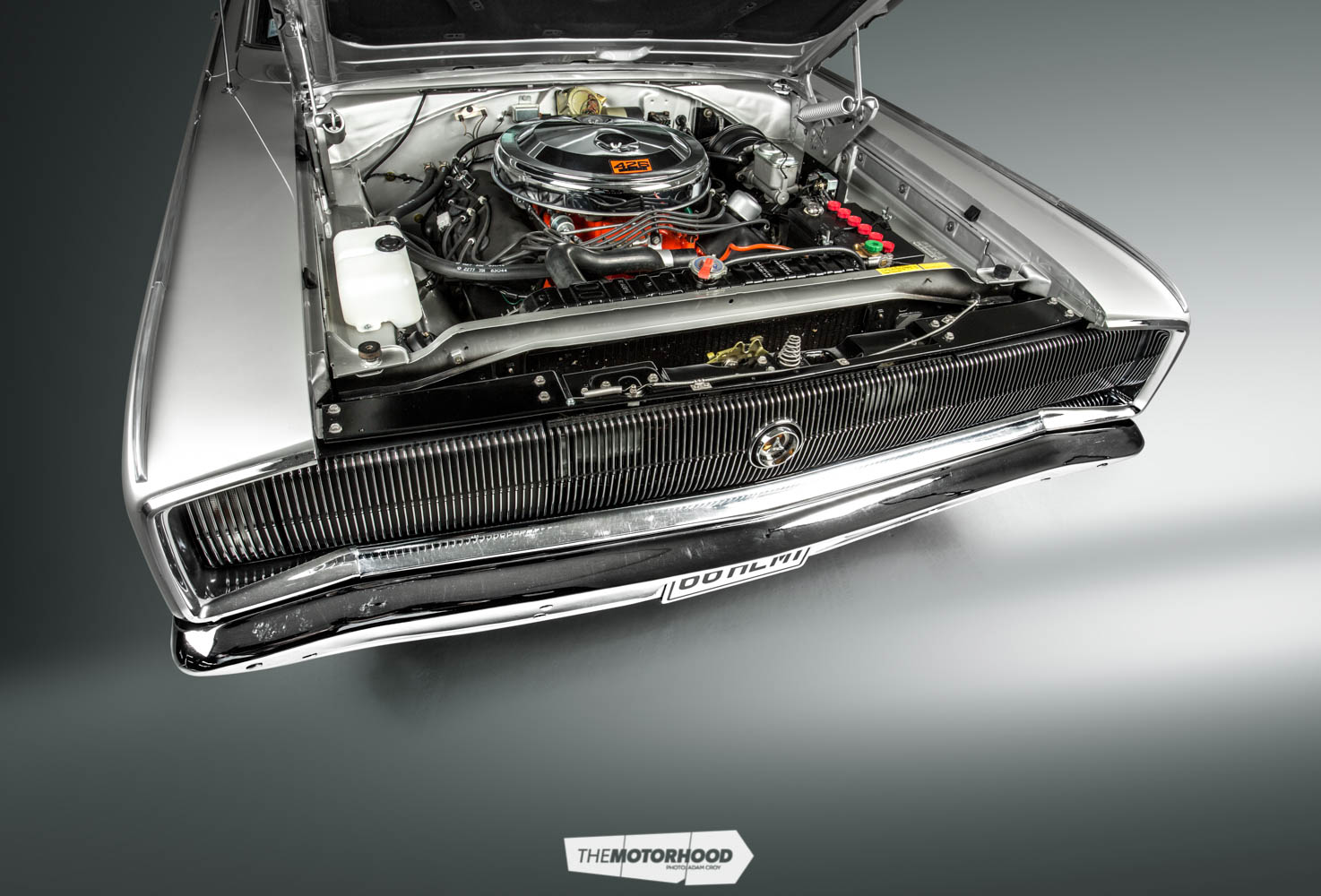
While Rodney was happy to take his time and just work on the Charger whenever he had a spare moment, Zeta had different ideas. Knowing just what the Charger meant to Rodney, she felt he needed to have it ready to unveil at the upcoming American Muscle Car Club (AMCC) show — the only spanner in the works was that the AMCC show was less than six months away, and this would be the only chance to make the show, which is held once every three years. She began to give him a rev up to get things done, but the real kick up his backside came at Christmas of 2016, when she purchased him an Ultimate Pass to Repco Beach Hop 17, with only three months to get everything finished. We’re not quite sure how Rodney’s ticker didn’t explode, although it must have come close to it a few times in the rush to piece it all together!
“I didn’t think it’d be possible,” Rodney ruefully admits, and it nearly wasn’t. Without the help of a great bunch of friends, all of who simply put their heads down and worked on the Charger in their own time, it’s very likely that the tight deadline would not have been met. Rodney and Zeta mention in particular Graham Goldsmith, a fellow Hemi owner who helped them out throughout the entire build. Rodney’s talents in the spray booth saw the big fastback body — primed and blocked to perfection — emerge with a beautiful coating of factory Silver Poly paint, and Mike Roberts’ steady hand laid down the roofline pinstripes optioned by John Latimer way back in 1966.
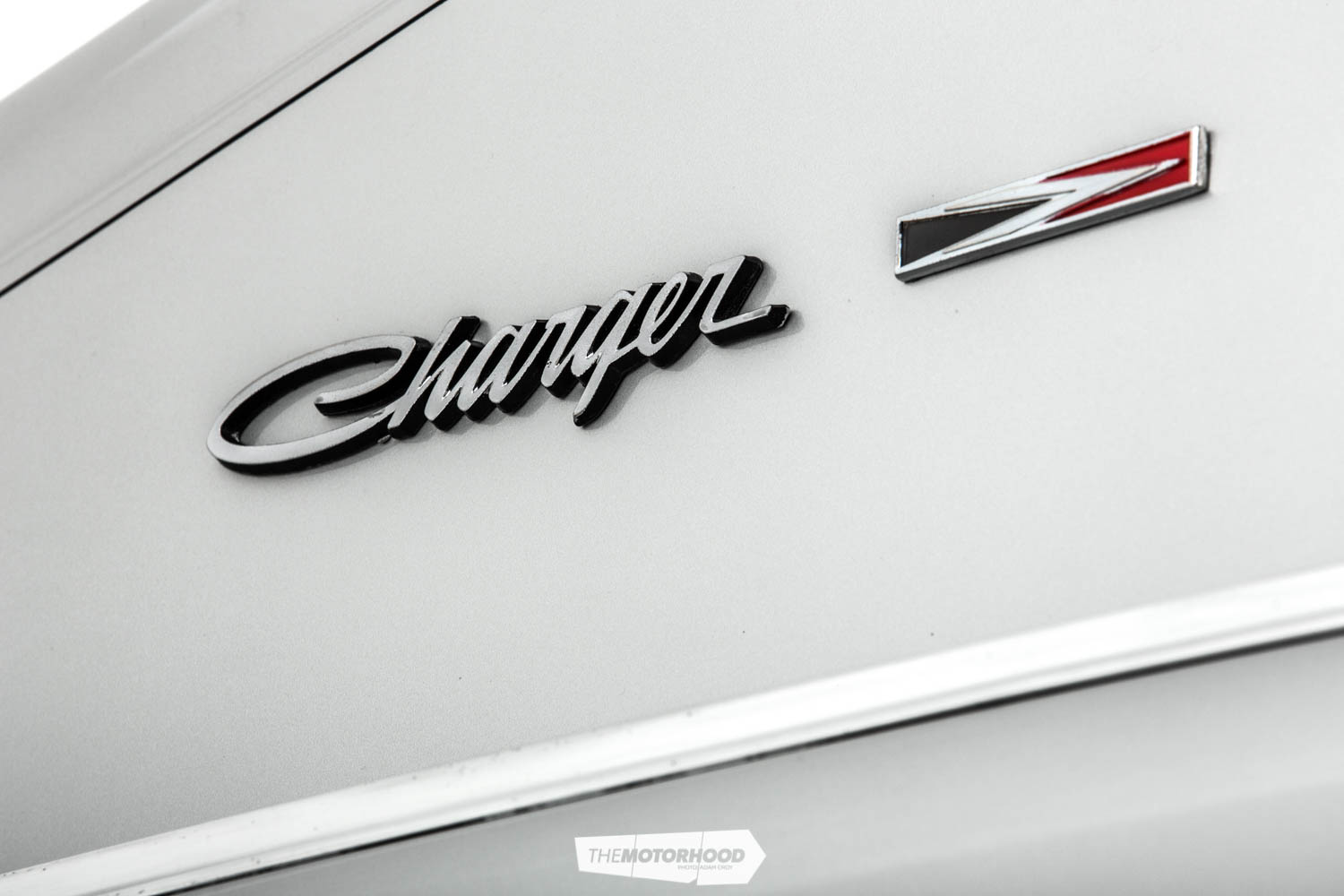
Believe it or not, the entire interior was so well preserved that it could be reused exactly as it was, with the sole exception of the carpet, as mentioned earlier. The uniquely crafted interior of the Charger is exactly as it would have been over 50 years ago, with pieces such as the individual bucket seats and full-length centre console in amazing condition, right down to the chrome garnish. Of course, the defining feature of the first-generation Charger’s interior is the beautiful electroluminescent gauge cluster comprising four gauge pods displaying a speedometer, tachometer, and four ancillary gauges — an unparalleled level of standard fitment in 1966.
As well preserved a specimen as the Charger is, though, Rodney and Zeta always planned to drive the thing. As a result, Moparphiles may note the sole mechanical deviation from a complete concours restoration: 1967-optional single-piston front calipers and discs. These replace the large drums that the Charger left the factory with in 1966, endowing it with braking characteristics far better suited to an all-steel tank tipping the scales in excess of 1800kg, and the direct bolt-on fitment means complete factory restoration is but an afternoon’s labour away.
Full charge
Against all odds, the deadline for Repco Beach Hop 17 was met, and Rodney and Zeta proudly displayed the Charger at the FPS stand. The best part, though, was being able to drive Hemi Don and his daughter Dawn-Marie around the picturesque Thames-Coromandel region in the car that he’d once owned and hoped to finish. Since they bought the car, Don has become a very good friend of Rodney and Zeta’s, and he’s made the trip to New Zealand for Beach Hop each year for the last three years. Although the car was finished in time for the AMCC show that followed, it wasn’t without a mammoth push towards completion, with bits and pieces still being sorted out on the morning of the show. The hard work and unique nature of the Charger was acknowledged with a Best Mopar award, Best Paint award, and third place in People’s Choice.
It is an undeniably beautiful machine, but Rodney’s perfectionist nature means that he’s still not completely satisfied with the standard to which he has rebuilt the Charger. He is, however, well aware that compromises must be made to ensure he and Zeta can comfortably drive the Charger the way they want to, and that’s something they need no excuses to do. It was on a clear and brilliantly sunny day that the pair drove their manually shifted ’60s muscle car through Auckland traffic for our photo shoot, arriving far less sweaty and dishevelled than we expected. The Hemi responds beautifully, neither the steering nor the shifter requires superhuman strength to operate, and the rudimentary suspension yields a surprisingly supple ride. Perhaps the best feature of all, though, is the violent baritone exhaust note — an ominous and deep-chested rumble that erupts to a hard-edged roar as eight carburettor butterflies rotate closer to vertical and the thin tacho needle sashays its way around the gauge. As beautifully as the Charger has been finished, it’s an untamed muscle car at heart, and it’s everything Rodney and Zeta ever wanted in a vehicle.

This article originally appeared in NZ Classic Car Magazine issue No. 320 — you can purchase a print copy of the magazine at the link below


